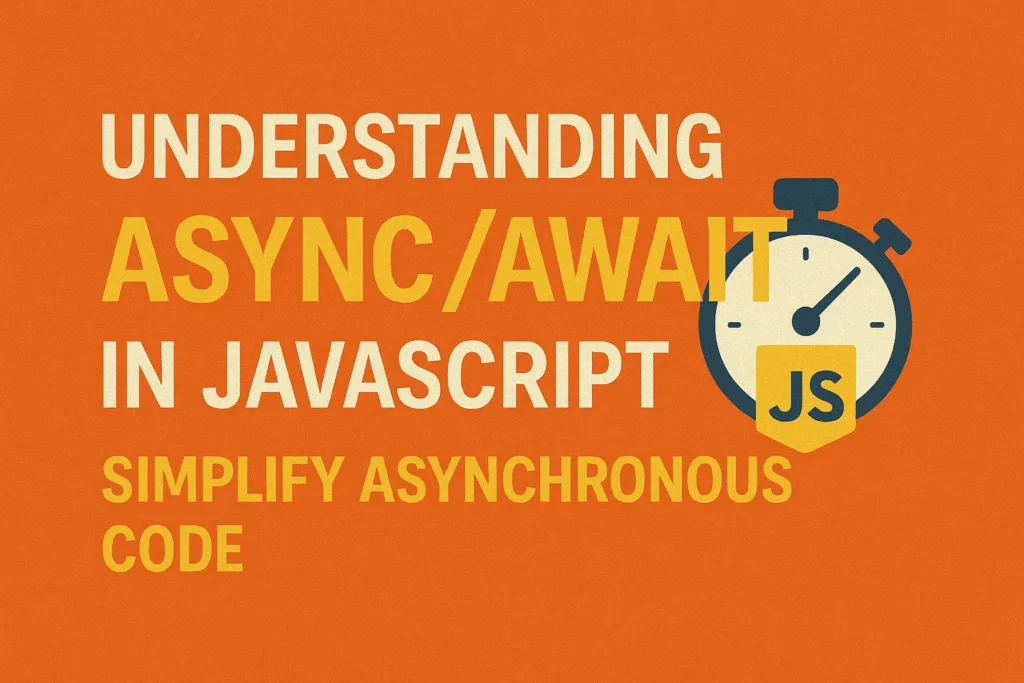However, with the introduction of Async/Await in ES8 (ECMAScript 2017), JavaScript developers were bestowed with a powerful tool to simplify asynchronous code.
Async/Await allows developers to write asynchronous code that resembles synchronous code, making it easier to understand and maintain. In this article, we’ll delve into the intricacies of Async/Await and explore how it simplifies asynchronous programming in JavaScript.
Understanding Asynchronous JavaScript
Before diving into Async/Await, let’s recap the traditional approaches to asynchronous programming in JavaScript.
Callbacks:
The earliest method for handling asynchronous operations involved passing functions (callbacks) to asynchronous functions. While effective, nested callbacks often led to the infamous “callback hell,” making code difficult to read and maintain.
function fetchData(callback) {
setTimeout(() => {
callback("Data fetched successfully");
}, 1000);
}
fetchData((result) => {
console.log(result);
});
Promises:
Promises were introduced as a solution to callback hell. They provide a cleaner syntax for handling asynchronous operations and allow chaining of multiple asynchronous tasks.
function fetchData() {
return new Promise((resolve, reject) => {
setTimeout(() => {
resolve("Data fetched successfully");
}, 1000);
});
}
fetchData()
.then((result) => {
console.log(result);
})
.catch((error) => {
console.error(error);
});
While promises improved code readability, managing multiple asynchronous operations still required careful chaining and error handling.
Introducing Async/Await
Async/Await builds upon promises and provides a more intuitive way to write asynchronous code. It allows developers to write asynchronous functions in a synchronous style, using the async and await keywords.
Async Functions:
An async function is a function that operates asynchronously via the event loop, and always returns a promise. The async keyword is used to declare an async function.
async function fetchData() {
return "Data fetched successfully";
}
Await Expression:
The await keyword is used inside async functions to wait for a promise to resolve. It pauses the execution of the async function until the promise is resolved and returns the resolved value.
async function fetchData() {
const result = await someAsyncOperation();
return result;
}
Simplifying Asynchronous Code with Async/Await
Let’s refactor our previous examples using Async/Await to demonstrate how it simplifies asynchronous code.
Refactoring Callbacks to Async/Await:
function fetchDataWithCallback(callback) {
setTimeout(() => {
callback("Data fetched successfully");
}, 1000);
}
// Refactored using Async/Await
async function fetchDataWithAsyncAwait() {
return new Promise((resolve) => {
setTimeout(() => {
resolve("Data fetched successfully");
}, 1000);
});
}
// Usage
async function example() {
const result = await fetchDataWithAsyncAwait();
console.log(result);
}
example();
Refactoring Promises to Async/Await:
function fetchDataWithPromise() {
return new Promise((resolve) => {
setTimeout(() => {
resolve("Data fetched successfully");
}, 1000);
});
}
// Refactored using Async/Await
async function fetchDataWithAsyncAwait() {
const result = await fetchDataWithPromise();
return result;
}
// Usage
async function example() {
try {
const result = await fetchDataWithAsyncAwait();
console.log(result);
} catch (error) {
console.error(error);
}
}
example();
Conclusion
Async/Await revolutionizes asynchronous programming in JavaScript by providing a cleaner and more readable syntax. By combining the power of promises with synchronous-style code, Async/Await simplifies complex asynchronous operations, making them easier to understand and maintain.
As JavaScript continues to evolve, Async/Await remains a fundamental tool for modern web development, enabling developers to write efficient and elegant asynchronous code. Embrace Async/Await to unlock the full potential of asynchronous JavaScript programming.






